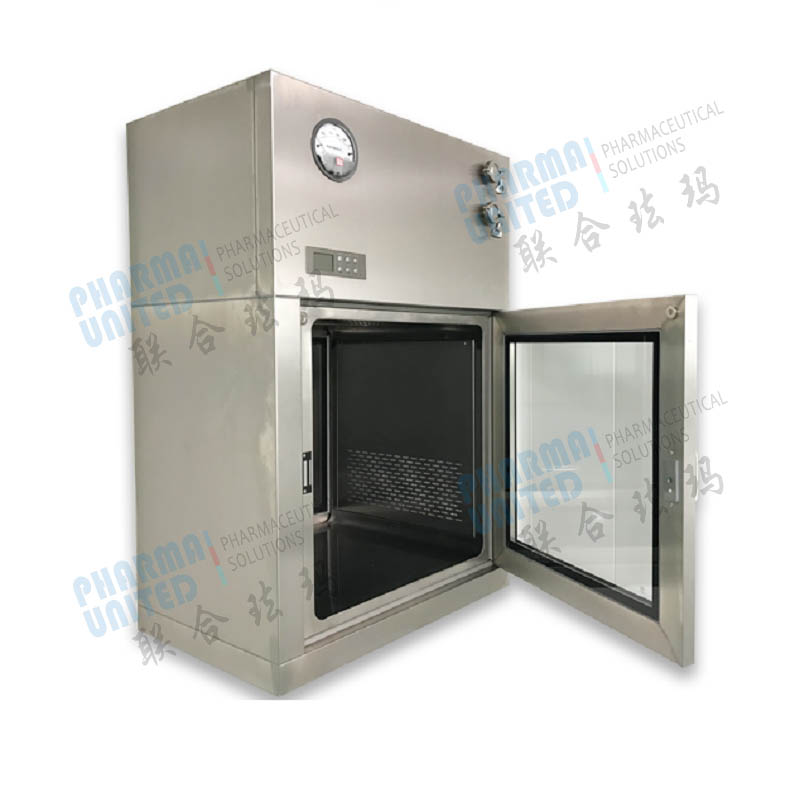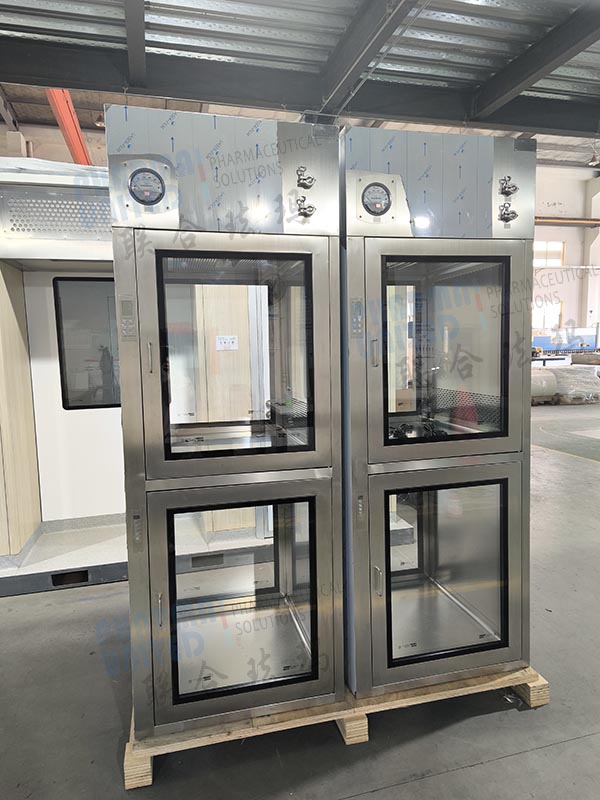A pass box is a widely used transfer device in cleanrooms, designed for transferring items between the cleanroom and external areas or between areas within the cleanroom with different cleanliness levels. Its purpose is to prevent contaminants from entering the cleanroom, thus ensuring the stability of the clean environment. Below is a technical article on pass boxes, detailing their functions and working principles.
 |
 |
Technical Analysis of Pass Boxes
1. Definition and Function of Pass Boxes
A pass box, also known as a transfer hatch, is a critical component in cleanrooms. It serves as an isolated passage for transferring items between different areas of varying cleanliness levels, or between clean and non-clean areas. The primary function of a pass box is to minimize contamination risks during transfers, ensuring a stable clean environment inside the cleanroom.
The key functions of a pass box include:
Contamination Prevention: Cleanroom Pass boxes prevent contaminants from entering or exiting the cleanroom by isolating the transfer process.
Air Filtration: Many pass boxes are equipped with air filters, such as HEPA or ULPA, to ensure clean air circulation within the pass box.
Separation of Personnel and Material Flow: By allowing only materials to be passed through, pass boxes separate human traffic from material flow, improving the efficiency of cleanroom operations.
2. Types of Pass Boxes
Pass boxes come in several types, tailored to different applications and structural needs:
Mechanical Interlock Pass Boxes: These use a mechanical system to ensure that only one door can open at a time, preventing direct air exchange between the cleanroom and non-cleanroom areas.
Electronic Interlock Pass Boxes: An electronic system controls the interlocking doors for higher precision and security, suitable for high-demand environments.
Air Shower Pass Boxes: These contain a built-in air shower system that removes dust and contaminants from items’ surfaces during the transfer process, making them ideal for ultra-clean environments.
3. Working Principles of Pass Boxes
The pass box operates on an interlock mechanism and includes an air filtration system to ensure cleanliness during the transfer process. The working process includes the following steps:
Interlock Door Control: Pass boxes typically have two doors: one facing the cleanroom and one facing the external area. An interlock system—either mechanical or electronic—ensures only one door opens at a time, which prevents cross-contamination.
Air Filtration: The pass box may include HEPA or ULPA filters to purify the air inside. Some models also feature an air shower system that blows air onto items to remove dust or other particles.
Transfer Procedure: During transfer, one door opens for the item to be placed in the pass box. The first door is then closed before the opposite door can be opened, allowing items to enter or exit without compromising the cleanroom's air quality.
4. Installation and Maintenance of Pass Boxes
Pass boxes should be installed in high-traffic transfer points according to cleanroom layout requirements. Regular inspections and maintenance of interlock mechanisms, air filtration systems, and air shower units are essential for optimal operation.
5. Applications of Pass Boxes
Pass boxes are widely used in several industries to control contamination and ensure product quality:
Semiconductor Manufacturing: Used to transfer delicate components like wafers, reducing the risk of particle contamination.
Pharmaceutical Industry: Ensures aseptic conditions by transferring drugs and instruments without introducing contaminants.
Food Processing: Prevents dust and microbial contamination of raw materials during transfer.